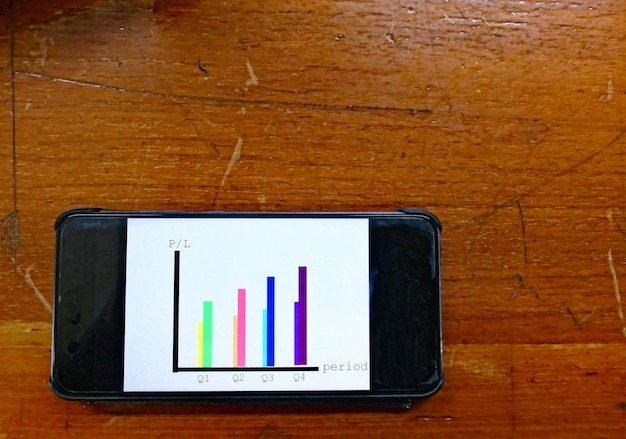Stop Overspending: 7 Money Management Hacks to Cut Expenses by 15%

Stop overspending by implementing these 7 effective money management hacks, designed to cut your expenses by 15% this year and help you achieve your financial goals through practical strategies.
Are you looking to take control of your finances and stop overspending? It’s a common struggle, but with the right strategies, you can cut your expenses significantly. Let’s explore seven money management hacks that can help you reduce your spending by 15% this year.
Understand Your Spending Habits
The first step towards curbing overspending is to understand where your money is going. Without a clear picture of your current spending habits, it’s difficult to identify areas where you can cut back. Tracking your expenses provides valuable insights that can guide your budgeting decisions.
Track Your Expenses Meticulously
Begin by tracking every dollar you spend. You can use a notebook, a spreadsheet, or a budgeting app. The goal is to capture all expenses, no matter how small. Over time, this will reveal patterns and areas of excessive spending.
Categorize Your Spending
Once you’ve tracked your expenses, categorize them into groups such as housing, transportation, food, entertainment, and miscellaneous. This categorization will help you see where the bulk of your money is going, making it easier to identify potential cuts.
- Use budgeting apps like Mint or Personal Capital to automate expense tracking.
- Review your credit card and bank statements regularly.
- Set a weekly reminder to log your cash expenses.
Understanding your spending habits is the cornerstone of effective money management. By meticulously tracking and categorizing your expenses, you gain the insights needed to make informed decisions and reduce overspending.

Create a Realistic Budget
Creating a budget is more than just a financial exercise; it’s a roadmap that guides your spending decisions and helps you stay on track. A realistic budget takes into account your income, expenses, and financial goals.
Set Clear Financial Goals
Start by defining your financial goals. Do you want to pay off debt, save for a down payment on a house, or build an emergency fund? Having clear goals provides motivation and direction for your budgeting efforts.
Allocate Your Income Wisely
Allocate your income to different categories based on your priorities and spending habits. The 50/30/20 rule is a helpful guideline: 50% of your income goes towards needs, 30% towards wants, and 20% towards savings and debt repayment.
- Use the zero-based budgeting method, where every dollar is assigned a purpose.
- Regularly review and adjust your budget as needed.
- Build in a buffer for unexpected expenses.
Creating a realistic budget is a crucial step in managing your finances and curbing overspending. By setting clear financial goals and allocating your income wisely, you create a framework that supports your financial well-being.
Automate Your Savings
One of the most effective ways to ensure you’re saving consistently is to automate the process. By setting up automatic transfers to your savings account, you remove the temptation to spend the money and make saving a seamless part of your routine.
Set Up Automatic Transfers
Arrange for a portion of your paycheck to be automatically transferred to your savings account each month. Start with a small amount and gradually increase it over time as you become more comfortable with budgeting.
Use Round-Up Apps
Consider using round-up apps that automatically round up your purchases to the nearest dollar and invest the difference. These small increments can add up significantly over time.
Automating your savings is a powerful tool for building wealth and achieving your financial goals. By setting up automatic transfers and using round-up apps, you make saving effortless and consistent.

Cut Down on Unnecessary Subscriptions
Subscriptions can easily drain your bank account without you realizing it. Many people sign up for subscriptions and then forget about them, continuing to pay for services they no longer use. Regularly reviewing and canceling unnecessary subscriptions can free up a significant amount of money.
Review Your Subscriptions Regularly
Take an inventory of all your subscriptions, including streaming services, gym memberships, and software subscriptions. Determine which ones you use regularly and which ones you can live without.
Cancel Unused Subscriptions
Don’t hesitate to cancel subscriptions you no longer use or need. Many services offer free trials, so ensure you cancel before the trial period ends if you decide not to continue with the subscription.
- Use apps like Truebill or Trim to identify and cancel unwanted subscriptions.
- Consider sharing subscriptions with family or friends to reduce costs.
- Evaluate whether you need multiple streaming services or if one or two will suffice.
Cutting down on unnecessary subscriptions is a simple yet effective way to save money. By regularly reviewing and canceling unused services, you can redirect those funds towards your financial goals.
Negotiate Bills and Shop Around
Many people accept bills at face value without realizing they have the power to negotiate or shop around for better rates. Whether it’s your internet bill, insurance premiums, or credit card interest rates, there’s often room for negotiation or the opportunity to find a better deal elsewhere.
Negotiate Your Bills
Contact your service providers and inquire about discounts or promotions. Often, they are willing to lower your bill to retain your business. Be polite but firm in your negotiation.
Shop Around for Better Rates
Compare rates from different providers for services like insurance and internet. Switching providers can often result in significant savings. Websites like NerdWallet and Compare.com make it easy to compare rates.
- Bundle services like internet, cable TV, and phone to get a discount.
- Consider raising your insurance deductible to lower your premiums.
- Use a balance transfer credit card to consolidate high-interest debt.
Negotiating bills and shopping around is a proactive approach to saving money. By taking the time to negotiate or find better rates, you can significantly reduce your monthly expenses.
Cook More Meals at Home
Eating out can be a major drain on your budget. Restaurant meals and takeout are often more expensive than cooking at home. By cooking more meals at home, you can save money and also have more control over the ingredients and nutritional value of your food.
Plan Your Meals in Advance
Plan your meals for the week and create a shopping list based on your meal plan. This will help you avoid impulse purchases and ensure you have all the ingredients you need.
Cook in Bulk
Cook large batches of food that can be eaten over several days. This saves time and reduces the temptation to order takeout when you’re short on time.
- Try batch cooking on the weekends to prepare meals for the week.
- Use leftovers creatively to avoid food waste.
- Explore budget-friendly recipes online for inspiration.
Cooking more meals at home is a straightforward way to cut your food expenses. By planning your meals, shopping strategically, and cooking in bulk, you can enjoy delicious, home-cooked meals while saving money.
Use Cash or Budgeting Envelopes
Using cash or budgeting envelopes can help you stay within your spending limits by making you more aware of your spending. When you physically hand over cash, you’re more likely to think twice about your purchase. Budgeting envelopes provide a visual reminder of how much money you have left in each category.
Withdraw Cash for Specific Categories
Decide on a budget for categories like groceries, entertainment, and dining out, and withdraw that amount in cash. Once the cash is gone, you know you’ve reached your spending limit for that category.
Use Budgeting Envelopes
Divide your cash into envelopes labeled with different spending categories. As you spend money, take it out of the corresponding envelope. This provides a visual reminder of how much money you have left in each category.
- Track your spending in each envelope to monitor your progress.
- Adjust your envelope amounts as needed based on your spending habits.
- Use budgeting apps as a digital alternative to envelopes.
Using cash or budgeting envelopes is a hands-on approach to managing your spending. By physically handling your money, you become more aware of your purchases and more likely to stick to your budget.
| Key Area | Brief Description |
|---|---|
| 📊 Track Spending | Monitor expenses to identify overspending areas. |
| 💰 Automate Savings | Set up automatic transfers to savings accounts. |
| 🍽️ Cook at Home | Reduce costs by cooking meals instead of eating out. |
| 🧾 Negotiate Bills | Negotiate bills and find better rates for services. |
Frequently Asked Questions
▼
Start by using a budgeting app, spreadsheet, or even a notebook to log all your expenses daily. Review credit card and bank statements regularly to ensure accurate tracking.
▼
The 50/30/20 rule suggests allocating 50% of your income to needs, 30% to wants, and 20% to savings and debt repayment. It’s a simple way to balance spending and saving.
▼
Review your bank and credit card statements to list all recurring charges. Then, assess which subscriptions you rarely use and consider canceling them to save money.
▼
Yes, contact your service providers and inquire about discounts or promotions. Comparing rates from different providers and switching can also lead to significant savings.
▼
Cooking at home is generally cheaper than eating out. You also control the ingredients and nutritional value, making it a healthier and more cost-effective option.
Conclusion
By implementing these seven money management hacks, you can take control of your finances and stop overspending. Small changes in your daily habits can lead to significant savings, helping you achieve your financial goals and build a more secure financial future.





